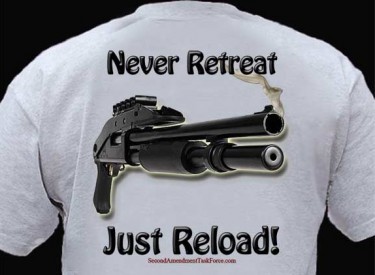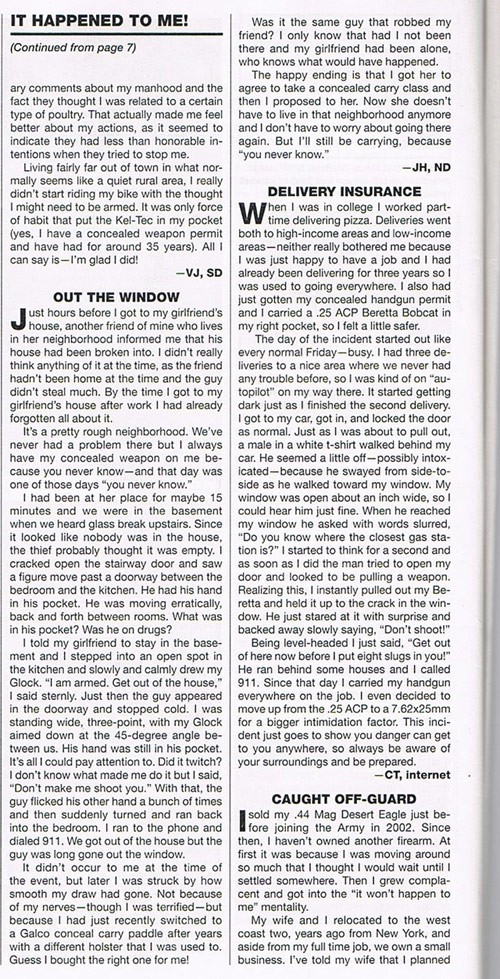Authentic (Possibly Racist) Natchez Cheese Grits Casserole

And thus concludes this series of our favorite casserole recipes. If you make what follows and eat it all, just go ahead and call 911 beforehand. To your health!
On June 11, 1957, Mr. J. Balfour Miller won a contest to name the Natchez, Mississippi, Hospital. His winning entry was “The Jefferson Davis Memorial Hospital.” That name was… later changed. But not until 1993!
His wife, Katherine Miller, founded the Natchez Pilgrimage in 1931. Despite its slightly frightening title, this merely meant that the local ladies would open up their houses for tours, and people would go bopping about, peering into linen closets. That it was 1931 was not a coincidence either. (Broke times!) And today you can even rent Hope Farm, her house. They were from, let’s say, good families. (They all had plantations!) She and her husband both were delegates to the Republican Convention, in 1956! (Eisenhower and Nixon: good call.)
In The Pilgrimage Garden Club Antiques Forum Cookbook, published in the early 90s, there is a recipe by Mrs. J. Balfour Miller.
I despise casseroles. I hate almost all dishes where food is mixed, unless you count peanut butter and jelly sandwiches, or macaroni with cheese. Anything involving a Crockpot™ is right out.
And yet… some things are always delicious.
Mrs. J. Balfour Miller’s Cheese Grits Casserole
1 cup grits, uncooked
4 cups water
1 tablespoon salt
1 stick butter
1 roll garlic cheese
1/2 pound sharp cheese
1 egg, beaten
2 tablespoons Worcestershire
Before we get to the directions…. can we just talk about how notable this list of ingredients is? “One stick butter” is, by itself, a truly wonderful thing to write down.
Now, also, you may not be familiar with a “roll” of “garlic cheese.” Kraft, in a moment of Northern aggression, discontinued this popular product. Here is one way to recreate this rather… intriguing item: by mixing actual cheddar cheese, Velveeta, cream cheese, garlic powder and liquid smoke. I’m going to suggest you don’t do this! Use some cheese and a little garlic and maybe some pepper. Do they use pepper in the Old South?
And now, here are her instructions:
“Cook grits in salted water. When grits is done, ad all the other ingredients and stir until the cheese and butter have melted. Pour into a greased pyrex casserole. Bake in 350 degree oven for 20 minutes. Serves 8 to 10.”
Yup, that’s all of it. (I enjoyed also “when grits is done.”)
Well. Calling this a “casserole” is a stretch, except in the sense that it is ingredients placed in a dish in the oven. But I would also like to point out that it is awesome. If three of the five best food groups are grits, cheese and butter, how can this dish be argued against?
It is perfectly acceptable to cut the butter down, to half a stick. It also should be noted that one could cut the cheese a little or even “a bunch” perhaps, and also one should try not to use an “oily” cheese, as there is only so much oil that grits can absorb, as this puffy, cheesy, heart-stopping mess solidifies into a tasty loaf of death.
But then, this recipe does make some sense. You have to fill the long, lonely slave-less nights with something, as you stare out across the river at Louisiana. Speaking of: you could totally pop some crayfish in this. That would make it then the ideal meal, as the addition of crustaceans means you now have four out of five of the best food groups! You could make it a Stargazy Cheese Grits Casserole, if you decorate the top of the casserole with the crayfish heads sticking out, peering skyward.
Or go nuts and pop sheets of puff pastry on top of this monstrosity! You really can’t ruin this dish, as it comes pre-ruined. Serve it with your favorite Confederate flag napkins! The South will rise again! Possibly out of your esophagus.
Serve with Zantac.
A Poem By Helen Vitoria
by Mark Bibbins, Editor
je ne sais pas mon nom
strange, the feel of walking & drumming
the syntax of animal husbandry
that man — who eats zippers & erases the lark
Helen Vitoria is the author of six chapbooks and the forthcoming Corn Exchange (Scrambler Books). She the editor-in-chief of THRUSH.
Why not visit The Poetry Section’s archive? I mean, unless you hate poetry or something.
You may contact the editor at poems@theawl.com.
Juicy J: Proud, Even Radical, Shorts Advocate
“I’m gettin’ money ballin’/But never played sports/I’m so hot, in the winter/I can wear shorts…”
— Juicy J weighs in on the great shorts debate. Having found his low-tech rhyme style (which often doesn’t much rhyme at all) particularly at home with the thwomping, orchestral Lex Luger sound that has taken over the southern side of the genre over the past year, the 35-year-old Three 6 Mafia rapper is on a hot streak. He signed with Wiz Khalifa’s Taylor Gang Records in December, and declared himself the game’s “No. 1 Get-High Rapper.” And while there’s lots of good stuff on his latest mixtape, Blue Dream and Lean, what everybody should really be listening to, over and over and over again, is the song he recently recorded with the electro-leaning producer A-Trak and Detroit’s Danny Brown.
Whoohoo! Man, I love that beat! That beat is so cold, in the summer, it can wear a down parka. It’s so cold, in fact, that it gives me the chills like some vintage Ice-T.
New Military Robots Specially Designed To Give You Nightmares
“Three of the U.S. military’s newest recruits reported for duty this week at the Army Test and Evaluation Command. These troops are different from normal soldiers in several ways — for starters, each has six feet. And they are robots designed to look and move like cockroaches.”
— Sometimes it seems like DARPA and Boston Robotics are just fucking with us, doesn’t it? They’ve made a flea robot, too. I can’t wait for the bedbug one.
America's Unchecked Gun Culture Killed Trayvon Martin
America’s Unchecked Gun Culture Killed Trayvon Martin
by Abe Sauer

As the investigation into what happened on February 26 continues, it appears increasingly more likely that Trayvon Martin, not George Zimmerman, was the one exercising his rights under Florida’s Stand Your Ground law. On CNN, Martin’s mom declared as much, saying, “My son was exercising his stand your ground rule.” Except, of course, 17-year-old Martin did not possess the single crucial element for standing one’s ground in the United States: A gun. Florida law restricts concealed handguns to those 21 and older. Instead the teen had a bag of Skittles.
This will happen again, probably soon, but not because of race relations or hoodies; because of guns and a nation’s increasing obsession with arming itself against all reason. And what is a nation armed to the teeth supposed to do once it has spent billions of dollars and countless political capital to be so locked and loaded? Sit on the couch and watch “Dancing with the Stars”? Hell no.
When all you have is a hammer everything looks like a nail, and when all you have is a gun everything looks like an imminent, violent threat. The failure of Martin’s death is not necessarily one of race relations, it’s one of gun relations.
Trayvon Martin’s case has become a special sensation, but it’s hardly unique. Martin’s death mirrors a recent Wisconsin shooting involving a young black man named Bo Morrison in a town called Slinger.
Morrison, 20, fearing an underage drinking charge, had fled a nearby house party when police arrived and hid on a neighbor’s porch. It just so happened that that porch was owned by a man that had called the police about the loud party. When the man heard a noise on his porch, instead of calling the police back, he armed himself with a handgun and went into the dark to investigate. Moments later, he shot into the dark porch, killing the unarmed Morrison who, by police reports, appears to have been standing up and raising his arms. Citing Wisconsin’s new Castle Doctrine law, the Slinger man was found to not have committed a crime. (Though, as the shooter’s attorney argued, he would likely have a case based on Wisconsin’s old law as well.)
What these cases have in common is not race, but guns, and the new laws that promote firearms as a first solution. In both cases, the shooters had recently spoken to the authorities, were in no immediate danger, and could have redialed 911 and waited, with their handguns drawn if they so liked. Instead, they moved themselves into harm’s way only to later hide behind laws meant to protect those who found themselves in harm’s way by no action of their own.
The national debate over these shootings is something America had just four years ago, when a Texas man shot two men he saw burglarizing his neighbor’s house. In that case, a man was advised to back off by 911, inserted himself into the crime and fired. Cleared on Stand Your Ground reasoning, the Horn shooting also devolved into a debate about race as the burglars were Hispanic.
In an effort to distance the shoot-first movement from negative associations, some gun advocates have taken the position that George Zimmerman was, in fact, wrong, and he doesn’t represent responsible gun carriers. Some have even called for him to be charged, reasoning that because of his aggression toward Martin, stand your ground doesn’t apply, that Zimmerman’s is a uncharacteristic case. But data from the Violence Policy Center suggest the Zimmerman shooting is prototypical.
While it can rightfully be characterized as biased and “anti-gun,” the organization’s data still cannot be ignored. Covering 290 shooter incidents involving conceal-carry licenses since 2007, the center found that 83 were convicted of homicide and of the 58 cases still pending, 48 had been charged with criminal homicide.
But even by its own admittance, the Violence Policy Center’s data is incomplete. And because there are no comprehensive statistics, Stand Your Ground and Castle Doctrine laws are often defended with real-life anecdotes.
For example, on a lark, I wrote a letter to Combat Handguns magazine for its “It Happened to Me” section. It was a common tale of successful gun use. Titled “Out the Window,” the letter was published — alongside four similar tales — in the Aug. 2011 issue under the initials “JH” from North Dakota. I mentioned “doo rags,” my girlfriend’s safety, and my Glock, all the details of the most lobotomized self-defense anecdote. The editor never questioned its authenticity, even though the letter noted that 911 had been called, a detail easy to corroborate. (Harris Publishing did not respond to requests for comment.)

The point being, the gun use anecdote, without a police report, should be treated as highly suspect at best.
***
Combat Handguns has a circulation downrange of 130,00, about the same as Guns Magazine. Guns and Ammo reaches 575,000. American Rifleman, 1.6 million. As readers flee most magazines, gun publications are flourishing — thanks in part to an increasingly hard-line editorial direction. The 12-year-old NRA title America’s 1st Freedom recently saw a single-year growth of 23 percent to a circulation north of 600,000. Since Obama’s election, gun-focused magazines have landed on the list of the 25 fastest-growing titles. Visit any supermarket magazine rack in flyover country and a quarter to a third of it will be dedicated to gun magazines.
Despite the abandonment of the gun-control debate, gun sales are booming since Obama took office. Sturm Ruger & Co. recently halted new orders, citing an inability to meet surging sales. The company’s stock jumped 7.8 percent. The president’s inaction on gun control has only led many — including the NRA — to suspect he’s concocting a super secret gun control master plan. It’s a paranoid delusion, one that should maybe preclude a person from owning a gun under mental-health provisions.
And instead of smoothing sales, the decrease in violent crime has been used to buttress the more-guns position. Florida gun supporters attribute the crime drop to its liberal you-can-shoot-people laws. But those same decreases have happened in Wisconsin, even though the state’s concealed carry and castle doctrine laws did not take effect until the last few months.
Even after a member of Congress was shot in the face by a man wielding a Glock with a 33-shell capacity, lawmakers could not get any traction to even begin to talk about what could possibly be the reasonable need for such high-capacity magazines. Instead, the arguments move in the other direction. The hottest front in gun rights? “Silencers are Legal,” a campaign by brand Silencero that informs gun owners that “Yes, silencers are legal in beautiful, constitution-upholding states.” It argues that silencers save hearing, are better for accuracy and “increase situational awareness.” Silencero lobbyists worked in Arizona to advance the “suppressor bill” — on the way to the governor — and it’s hosting the first annual “Silencers are Legal Shoot” in Dallas on April 28.
As much as many in its community may detest it, Hollywood has aided and abetted the explosion of gun culture in ever way. The Internet Movie Firearm Database is a hot property. Angelina Jolie’s live-firing Glock from the film Salt fetched $3,200 at auction. Terry Crews, the automatic-shotgun-toting star of the kill-em-all flick The Expendables, joined in a Trayvon Martin tribute sing-a-long.
***
People don’t kill people, people emboldened by laws they don’t fully understand kill people. Stand Your Ground and Castle Doctrine laws alone are not the direct instigators of shootings such as the Martin and Morrison deaths. Instead, they are just road maps for dumb gun owners looking for a fight.
Most scenarios that require a gun as a solution are messy, fast affairs where the kind of thoughtful reasoning taught in concealed carry permit classes is an unaffordable luxury. A stand your ground law encourages those with guns, but often little if any training, to act instead of flee. By letter these may be called “stand your ground” laws, but in practice they operate as enforce your ground laws because, simply, the smart people who write and lobby for the laws are not the dopes who come to carry the guns with an understanding they now have an absolute right to use them.
This in a paranoid modern American seduced by the increasingly popular idea of arming oneself to… do something. Incidentally, as the blog The Truth About Guns points out, authorities in the Trayvon Martin shooting found the magazine of George Zimmerman’s gun was full. This means “Zimmerman loaded the gun, racked the slide to put a round in the chamber (reducing the number of bullets in the magazine by one), removed the magazine, put another round in the magazine, then replaced the magazine in the gun.” In simpler terms, Zimmerman went through the trouble of chambering a shell and then reloading the magazine to full so that the gun would be ready to fire immediately, plus have an extra round. It’s speculative, but had Zimmerman needed to “rack the slide” or chamber a shell in that final scuffle with Martin that Zimmerman is claiming happened, it may not have been so easy to get off the deadly shot. For this very reason, carrying an already-chambered handgun is a point of debate within the conceal-carry community.
When Indiana Gov. Mitch Daniels recently signed an NRA-backed “stand your ground against police” law — a law that, unsurprisingly, was unpopular among police officers — Indiana Supreme Court Justice Steven David predicted such a law “unnecessarily escalates the level of violence.” The law itself just stated that police officers acting illegally had no right to enter a home, but what a lot of gun owners likely heard was that the authority of police is subjective.
If the conversation about the Trayvon Martin case continues to be mainly about race, the NRA and pro-gun advocates will be the true victors. Let the sides argue endlessly about the hopeless subjects of racial profiling, hoodies and what’s to be done about young black men who insist on walking around the world buying candy. (Answer: More guns!) Just so long as the argument is not about how an increasingly armed and emboldened society is inevitably only going to experience more and more of these incidents. Rise, repeat, rearm.
As for Zimmerman, the facts are ominous. The Violence Policy Center’s data show that of those nearly 300 cases of deaths involving concealed carry permit holders, a full 134 were suicides.
Abe Sauer is the author of the book How to be: North Dakota. He is on Twitter and has his concealed carry license. Email him at abesauer @ gmail.com.
Can a Crazed Jet Blue Pilot Break Down a Bulletproof Cockpit Door?

There’s always a bit of scaremongering that goes on with the genre of Crazy Airline Stories. Are our skies safe? What about the children? That kind of thing. So, in the story of the Jet Blue pilot, Clayton Osbon, who lost it this week and was restrained by passengers and crew, the LA Times says today that he “pounded so hard on the locked cockpit door that the first officer feared Osbon was breaking through the bulletproof barrier.” This sentence reads funny, on first glance! But the door is bulletproof, one thinks! Surely a non-bullet, then, can’t break down the door? Or can it.
Let us look at our post-9/11 bulletproof cockpit doors. The FAA guidelines say that door components have to be rated to withstand 2 impacts of 300 joules, at three different cockpit-facing points. And then the bolted door is rated for pulling force. Ooh, science!
For a sorta helpful comparison of what that means, a 9mm Luger has the muzzle force of, give or take, 470 joules. That’s less than really helpful, because a bullet is incredibly focused; that’s why bullets go through things and people, because the force is compact. And a person trying to break through a door is more distributed. (And the material used to make the door bulletproof doesn’t serve the same function as what makes the door difficult to break down.)
So let’s use another human motion: weightlifting, and its foot-pound force. The doors are rated for 221 foot-pounds by that measure. What’s that mean? If you look at the physic of weightlifting, the math says that, if you benchpress 250 pounds for eight reps over 48 seconds, that’s an expenditure of 208.3 foot-pounds per second.
For Boeing planes, which Jet Blue doesn’t use, let’s revisit what they said about their bulletproof doors: “The new door withstands bullets and small explosives and can resist a force equivalent to an NFL linebacker hitting it at Olympic sprinter speed.” Airbus doesn’t make that kind of grand (and kinda hilarious) claim, but they do also meet the FAA ratings.
A football tackle — mass plus speed! Inertia! The laws of physics! — can be 1600 pounds of force. (Lots more here on football physics! There’s a million variables.) But an object hitting an unmoving object is not quite easy to calculate, because the question of force relies upon: how much time passes during the impact? If a person were moving at 200 mph, and the impact took .01 seconds to transact, the impact would be significantly stronger. But then to achieve that speed, that person would have to be shot out of a cannon inside the airplane. Which seems unlikely, or at least complicated. (This is, of course, why people use battering rams on doors — they’re small enough to direct force, light enough to gain speed.)
So the problem for a disgruntled captain is actually getting up enough speed to create force and to minimize time of impact, so as to deliver force. If you had a really good run-up, definitely from at least the middle of first-class, and you didn’t break something in your shoulder on the first two impacts, it seems pretty likely that you could eventually definitely cause a hinge to snap on the cabin door. You might get really lucky on the first two attempts even! (Should, you know, you be allowed more than one chance.) But it seems at the very least highly unlikely that just banging your crazed ham-fists on the door is going to do the trick.
Young Elephant Tries To Run Away From Circus For Same Reason Young Humans Try To Run Away To Join...
Young Elephant Tries To Run Away From Circus For Same Reason Young Humans Try To Run Away To Join Circus
“Handlers say Baby ran away from the circus because he refused to take a shower.”
When Your Friend Is Also Your Boss: A Cautionary Tale
by Logan Sachon

This series is brought to you by TurboTax Federal Free Edition.
Mike Dang: Logan, do you remember when I was your boss? Good times, huh?
Logan Sachon: Well, Mike, I do remember it, but apparently not the way you do, because I thought it was a terrible time.
Mike: Yes, well, becoming your boss was sort of an accident. We both started out as contributors to the website where we worked, and you sent me this really cute email saying you liked my writing, and I replied that I really liked your style too, and then we IM’d everyday forever. Yay! Best friends! And then I got promoted a bunch of times and became your boss. It was all very sudden, but also sounded like it would be fun.
Logan: The fun part for me was that I thought it’d be nice to not be scared of my boss anymore. (I’ve only had one Genuinely Scary Boss, but I think it’s healthy to be a little bit scared of the person who signs your checks, and so I usually am.) But I wasn’t scared of you because you were my friend — nothing scary about that! But not being scared of you resulted in me turning into the worst possible employee version of myself. I remember this really awful Dark Period of me sucking at my job and taking advantage of your friendship/boss-ship and milking your leniency and kindness in a not totally accidental way. And wanting to stop but not being able to stop. That was a drag and kind of stressful and awful for us both.
Mike: Well, I covered for you a lot, and I probably shouldn’t have done that. That made me a bad boss because it meant I was treating you like a friend — a friend who covers for his friend because he doesn’t want his friend to get in trouble with the boss. But that didn’t make sense because I was your boss. So I should have just made you own up to your mistakes so you could learn how to not repeat them. Lesson learned!
Logan: One not fun thing that I’m not going to do would be to see how many emails and Gchat conversations come up if I search “I’M SORRY MIKE” or “YOU SHOULD JUST FIRE ME” or “DON’T HATE ME BUT.” My approximate guess is that there would be at least one for every day you were my boss. Okay, I’m going to look one up. Okay, I’m done. I think I have PTSD from reading through those chats.
Thinking back on that time: I was sort of like a little kid, trying to see how much I could get away with. Every now and then I would have a small break and I’d smack my head with the realization that if I did my job well, I’d be helping you and making your life good, and that should be worthy! And then I’d do that for a second, and then… I’d stop. Because, you know, I wasn’t the boss, and as a lower-level employee, my job was to basically get away with as much as I could. This chat is not showing any of my best qualities at all, is it?
Mike: To be fair, half of it was my fault. See? There I go trying to cover for you again. But indeed, I really struggled with simultaneously helping you and taking care of business at the office. Because as a friend, I wanted you to be happy! I think this was all exacerbated by the fact that you worked remotely and I didn’t have the luxury of physically standing over you to make sure you were getting all your work done. I would often wonder what you were doing when you weren’t responding to my Gchats. So that is another thing I would have done differently — I would have made you move to New York and physically work out of the office.
Logan: I was reading blogs, Mike. That’s what I was doing. And yes, I think being in the office might have been better. I would also like to take this opportunity to say that I’ve never been fired from a job, and that I am (generally) a good employee and person. Thank you.
Mike: I will say that when I was not your boss, working with you was the best. We had a lot of fun times! I think this whole experience taught me that I am good at being a friend, and good at being a boss, but not good at being a boss-friend, because I was also managing ten other people who were not my friends, and that actually went really, really well.
Logan: I missed you as a coworker, when you were my boss. When we had other bosses, I used to IM you all the time with fun confessions about having not starting a post that I just told a boss was nearly done, whoopsydoops, la dee da. And you’d always be stressed out on my behalf, but also supportive. But when you were my boss, I couldn’t tell you the truth about the post having not been written, because you were the one I had just told I had written it. Very confusing.
You did give me a raise one time, as my boss-friend. Nepotism?
Mike: I gave you a raise and I remember how amazing it felt to be able to do that. Like, it was one time when I actually felt I had some sort of power! But you deserved that raise because I gave you more responsibilities, and this was when you were actually doing really great — before you started not doing anything, basically. And no, I didn’t feel like it was nepotism because I negotiated a raise on behalf of all our contributors, and when it came to you, I laid out your case to my own bosses, and they were the ones who approved it. As you know, I go through all the appropriate channels for these things.
Logan: Ha, yes, that was kind of a joke to see how upset you would get at implied nepotism. You are the most Moral and Ethical person I know.
I think we both could have handled the whole boss-friend situation better, but if anyone asked me for hot tips on how to do it, I would simply advise against it. Because, ultimately, worker bees and boss bees simply don’t have the same goals. Like, bosses want to get as much out of you as possible, and workers want to get away with as much as possible. Bosses should be bosses, and friends should be friends. That said, I think it’s okay for friends to be co-bosses. I think equal distribution of power would work for me/us (as it has worked for others, historically).
Mike: But I agree that the boss-friend situation is a very sticky situation that should be avoided at all costs, if possible. I think the best situation is having a boss with whom you are friendly, but not actually friends. You want to be able to fire or promote your employees without feeling that you are ruining a friendship or playing favorites. But perhaps there are boss-friends out there that have had nothing but amazing times, and if they’re out there, I want to hear about them!
Logan: I don’t think they exist. I would like to close with one more example of the bossfriend relationship not working out: Lord Grantham and Mr Bates. They were friends, then Lord G became his boss, and it was nothing but drama drama drama after that. Very trying, very taxing. I don’t think they’d recommend it, either.
Mike: I blame Bates for the whole Mr. Pamuk situation. He should have been quietly lurking the halls like everyone else, and prevented Mr. Pamuk from entering Mary’s bedroom.
Logan: Well it wouldn’t have been a thing if it wasn’t for his dumb wife. Don’t talk smack about Mistah Baaates. Also: Doesn’t it seem like it should be “Pamouk”? I feel like that spelling would be better.
Mike: You’re fired.
Logan: Too late! I quit.
Sponsored posts are purely editorial content that we are pleased to have presented by a participating sponsor; advertisers do not produce the content.
Mike Dang and Logan Sachon are happily just friends.
